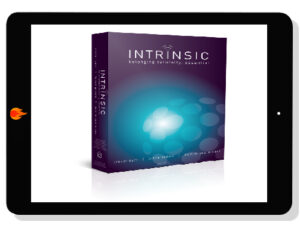Ron Bertino – Portfolio Investing
Description of Portfolio Investing
Get steady and consistent returns with low drawdowns, spending just 20 mins per month
Do you need steady returns with low drawdowns?
Sure. Doesn’t everybody?
The problem is that we’re led to believe that investing our own money is too risky and we should therefore use hedge funds in order to take care of our long term investments.
Financial concepts tend to sound quite complicated and involve either having to get deep into the weeds with complicated financial formulas, or resorting to having to become a programmer in order to code up even a simple investment strategy.
Could you outperform the average hedge fund?
That may sound like a crazy question to ask, but did you know that the average yearly returns of hedge funds are just 4.5% to 5% over the long term? They may be higher in more recent years, where the stock market has been increasing at an incredible rate, but once you include a few stock market crashes, then the yearly returns drop to an average of around 5%.
That’s a performance statistic which tracks 600 to 800 of the larger hedge funds, where each of these hedge funds need to have at least 100 million dollars of customer funds under management.
While you may be frustrated with that level of lackluster performance, the hedge funds are still perfectly happy to keep charging you their management fee, no matter how they perform.
Ray Dalio claims to have found the Holy Grail
While the average hedge fund performance has been lackluster, there are certain hedge funds that do perform very well. Ray Dalio runs one of the largest hedge funds in the world, called Bridgewater Associates, which as of 2018 manages over 125 billion in customer funds. Ray Dalio himself is a billionaire. So when a person like this makes a statement about having found the Holy Grail, then perhaps we should pay attention.
Here is a short 4 min video, where Ray Dalio explains the concept of the Holy Grail. Note that he’ll reference a bunch of terms that you may be unfamiliar with (standard deviation, correlation, alpha, information ratio, etc). Don’t worry, by the time you complete this course, you’ll know and fully understand all of these financial terms.
The main point he’s making is that the Holy Grail can be achieved by trading a variety of trading strategies or portfolios, where the return of each of these portfolios is unrelated to the others. When one strategy or portfolio is losing money, then hopefully the others aren’t losing money at the same time.
The keys are to:
have a variety of different portfolio strategies to choose from
be able to measure the degree of correlation between these strategies
You’ll be learning both of the above in this course.
What will you learn in Portfolio Investing?
Introduction
Welcome to the course
Strategic versus tactical asset allocation
Introduction to bonds
Asset classes
Hedge funds
How data can trick you
Returns
Getting historical data
Linear versus log scale
Arithmetic and log price returns
Cumulative arithmetic and log price returns
Converting arithmetic and log returns
Arithmetic and geometric mean
Wealth index
Performance charts
Measuring risk
Variance and standard deviation
The portfolio effect
Sharpe ratio, Sortino ratio, Calmar Ratio, Martin Ratio
Alpha and Beta
Correlation and R Squared
Treynor Ratio and Information Ratio
Value-At-Risk and Expected Shortfall
Factor models
Capital Asset Pricing Model (CAPM)
Fama French 3 factor model
Permanent portfolios
Equal and Value Weighting portfolios
Calculating portfolio returns
Review of 5 different permanent portfolios
Moving average filters
M.A.F. – single asset
M.A.F. – all assets in a portfolio
Modern Portfolio Theory
Introduction to MPT
Correlation and the correlation matrix
Efficient frontier
Minimum variance portfolio and mean-variance efficient portfolios
Rebalancing
Return vs risk graph
Capital Allocation Line, and margin effect on returns
Kelly Criterion – optimal f
Inverse variance portfolio
Risk parity portfolio
Dual Momentum
Review of 6 different dual momentum portfolios
Other portfolios
Review of two Adaptive Allocation portfolios
Review of two Core-Satellite portfolios







